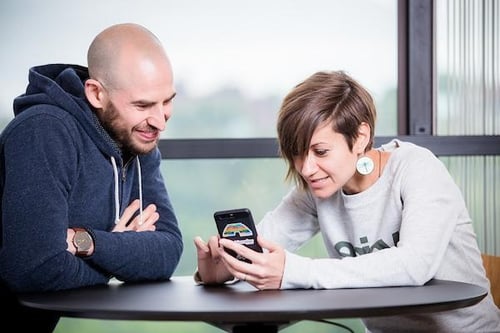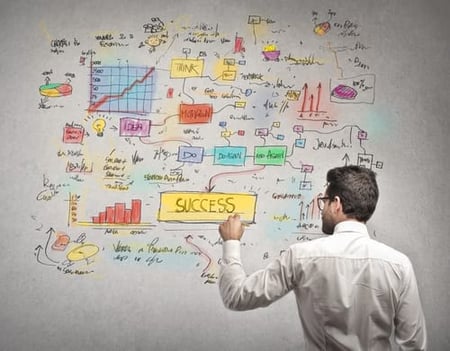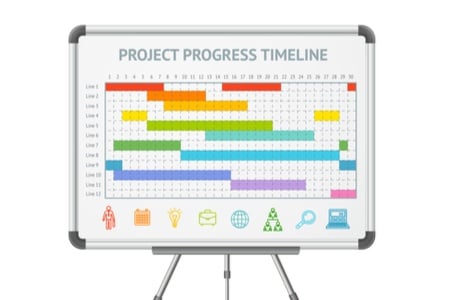Finding an HR technology vendor can often feel like a risky process – after all, if you’ve never launched anything like this for your company, how do you know that you’re getting the help you need? HR solutions can be a big investment for any business, and its success often rides on the HR team’s mix of creative, innovative, relational and project management skills.
Because we’ve partnered with over 2,500 businesses and take feedback seriously when it comes to improving our processes and product, we thought we’d share the types of things to look out for when you partner with a new HR vendor. What questions should you ask, and what tasks should you add to your list so that the beginning of the process runs as smoothly as you can get it to? What, exactly, should your employee engagement software implementation plan look like?
Let’s get started...
1. Who’s on your launch team?
Up until the time you sign a contract with a vendor, you’ve probably been dealing with a consultant. But this doesn’t mean the consultant is the same person who will lead you (and your tech team) through the platform set up, design and configuration and it’s good to find out exactly who will be involved in helping you set up your new tech.
At Reward Gateway, we assign each new client a project team that helps them through the process and beyond. That team consists of the following people:
- Employee Engagement Consultant: Helps with the program’s overarching employee engagement strategy to determine how we can best help you reach your goals.
- Implementation Specialist: Your dedicated project manager, responsible for building your unique, tailored solution, oversees all the details from kickoff to launch and serves as your liaison to other internal RG technical resources, to get your program up and running with ease.
- Client Success Launch Strategist: Your strategic partner throughout implementation and beyond, works with you to help achieve your goals and objectives, developing and executing communication strategies to generate excitement and drive maximum engagement in your program.
- Client Success Manager (CSM): Once your program is up and running, your Client Success Manager will be your go-to partner for ensuring long-term success, advising you on best practices to make continuous improvements and drive business results.
Ask yourself: Do you have a specialist at each stage of the implementation process that you can turn to for guidance or do some of the heavy lifting for you?

2. What happens after you sign the contract?
So, you (or your CFO and CEO) have signed the dotted line and the legal team have dotted the I’s and crossed the T’s. Now what? You and your vendor will lock in a project kick-off meeting — a time to introduce key stakeholders from your business to the key members of your project team and confirm the timeline and milestones in your project.
3. What exactly does your project look like?
Identifying the project scope is key, and often it’s hard to gauge how much prep work launching new HR technology requires. Depending on the type of platform you launch, your vendor may need things like your company’s brand guidelines and photographs of your employees, a map of your reward and recognition workflows, and user lists in specific file formats.
Ideally, your vendor will provide you a list of these items and explain what is required at different points of the project, and the areas their specialists can help.

4. Have you outlined vendor responsibilities, and the deliverables from your business?
Be clear early in the process who will be responsible for different parts of the platform set up and design, and what you will need to drive and take a lead on internally, versus what your vendor will manage for you.
For example, at Reward Gateway we provide a complete design service for our employee engagement solutions, both at implementation and ongoing. Some clients choose to DIY if they have an in-house design team, but most clients prefer to use our services since we’ve done it so many times. Because of our experience, we’re in a position to make recommendations on best practice site layout and advise the best way to communicate each element of the new program to your people.
And, rather than designing the whole hub at once, we approach our clients for feedback and approvals each step of the way so that we have the best chance of getting it right. We can liaise with your team or directly with internal marketing and communications – whatever makes life easier for all.
5. Who are your stakeholders, and when do you bring them in?
A platform that touches every employee is likely to have several stakeholders in your business. This may include any c-suite leaders or business “sponsors” who might have a big sway in decisions about how your program works, or an IT contact who would set up things like SFTP and SSO in the background.
It’s a good idea to keep these key contacts in a list (ask your vendor if they have a template), so that if you are ever unavailable or need to hand the project or application over to someone else later on, they know who they contact for what.

6. Are there potential roadblocks to your launch date?
Always anticipate risks and issues that could adjust your launch date, or timeline of your project. These can differ from platform to platform and often depend on the nature of the tech you’re implementing. For example, if you’re implementing something that’s customizable, it’ll be hard for a vendor’s creative team to design icons or creative if your company brand is in the middle of a review or if have yet to name your benefits or reward and recognition program (often, choosing an engagement platform name can be the toughest part!).
Here is quick list of some of the things you will definitely need for some of the HR technology platforms you might use - it's not by any means comprehensive, but is there to give you an idea of the type of things your vendor needs at different stages of the process before moving onto the next part:
| Any HR Platform | Reward and Recognition | Communications Hub |
|
|
|
Identifying risks and issues early helps you and your vendor move the project along and manage expectations on both sides. Launching your first employee engagement platform can seem daunting, but when you have the right partner by your side, it’s much more manageable.
In our next post, we explore what it takes to deploy your HR technology solution and everything you need to check off to running with stellar results.

%20(1).jpg) Emily Burke
Emily Burke

